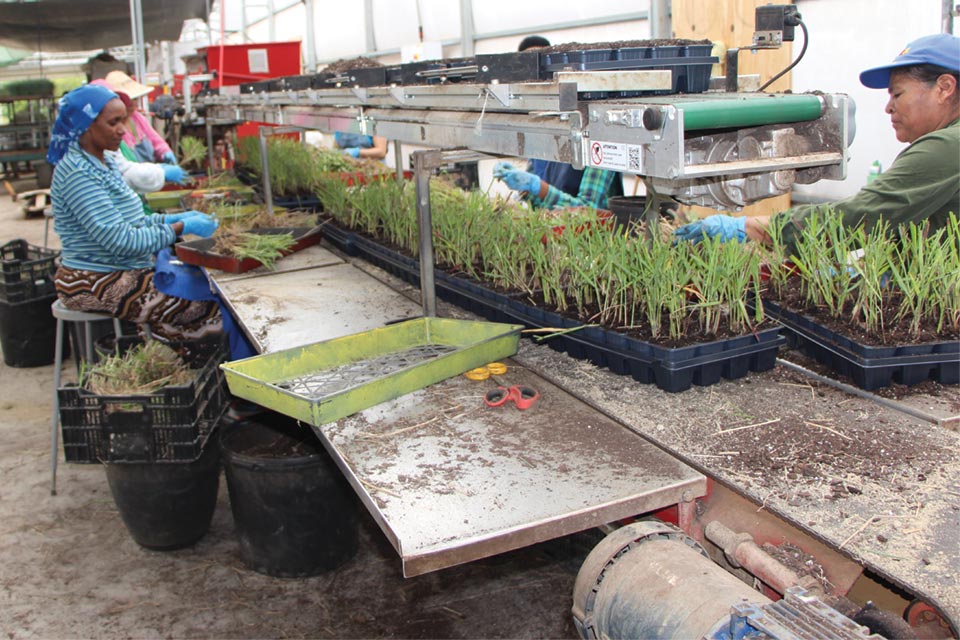How an Online Costing Course Improved Hoffman Nursery’s Bottom Line

Part of tracking costs accurately is keeping track of labor costs and working to improve efficiencies. Photo by Laura Drotleff
One of the biggest problems in the greenhouse and nursery industry is slim profit margins. For our industry to continue to succeed and further prosper, there has to be more knowledge of true costs. Last summer, I was lucky to take the University of Florida Institute of Food and Agricultural Sciences (IFAS) Extension online Costing and Profitability course. I first heard about it at Cultivate 2017 when Dr. Paul Fisher, one of the course instructors, gave a costing seminar. This relatively inexpensive online course is eight lessons made up of lectures from six academic and industry instructors. There are tons of helpful spreadsheets and even a costing app that you can use in the greenhouse.
The information covered in four weeks can help the smallest grower up to the largest one. It includes information on interpreting your income statement, using seasonality and space to calculate your cost per square foot weeks, and calculating the return on investment (ROI) when purchasing a piece of equipment. It even has a whole section on lean techniques that you can incorporate to improve labor costs and efficiency.
We are a young plant business with a turnover rate of less than one year. This posed a specific challenge because we didn’t fit into either the greenhouse or nursery categories. When we started looking at costing years ago, veteran (actually a Vietnam veteran) nurseryman Jim Scoggins of Wight Nurseries taught us the equivalents method for costing, typical for those nursery businesses with turnover of greater than a year. However, we found that we needed to hone in on those numbers to better understand our costs. In taking the course, I learned more about the costing per square foot week method.
The course helped me understand the numbers needed to calculate cost per square foot week. Gathering all of those numbers is another story. We keep track of many numbers (probably too many if you ask our team), but not necessarily in the form needed for calculating cost. So, changing the form involves some work. Once inputted into the provided spreadsheets, you can calculate the crop cost.
Working Through the Hurdles
The biggest obstacles we found were determining how detailed you need to be and the length of time it takes to gather the numbers. Sometimes you get lost in the details. For example, we start by looking at overhead in terms of space use. Then it gets complicated. We have three types of space that cost us different amounts of overhead: a heated gutter-connect greenhouse, heated hoops, and unheated hoops. Obviously, the same amount of growing time spent in each space has a different cost.
Seasonality, another aspect addressed in this course, also affects cost — a summer crop requires different resources (and costs) than a winter crop. To take this into account, you need greenhouse occupancy over a year’s time. We were lucky enough to already have this information, but we needed to get it into a usable form for costing purposes.
Calculating a general cost per square foot week for all the plants we grow is a good start. This should take care of the majority of the plants. Later, we can break costs down for types of plants — some we think cost us the most or least based on stock cost, production labor needed, or time it takes to finish. We can do separate calculations for different crops as needed.
This course is the perfect starting material for learning how to calculate costs in the complex business of growing plants. I hoped to have a true cost for the crops we produce by the end of the four-week course, but I was not that fortunate — mostly because of my own time constraints. It takes time and dedication to master the costing process; however, understanding how you can manage costs is one of the best ways to ensure the stability and sustainability of profit for your business.









